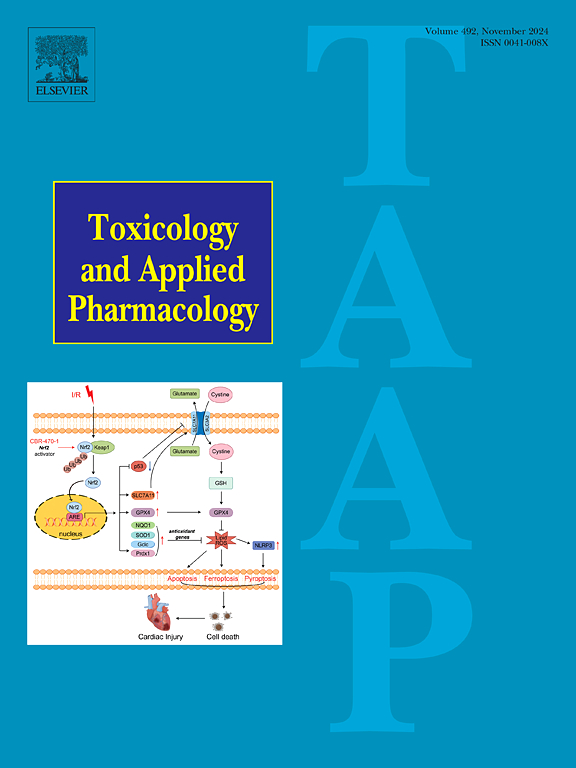Exploring the mechanism of baicalein on breast cancer based on network pharmacology, molecular docking and in vivo experiments
IF 3.3
3区 医学
Q2 PHARMACOLOGY & PHARMACY
引用次数: 0
Abstract
Breast cancer ranks among the most deadly gynecological cancers and presents a significant risk to women's health. Baicalein, a flavonoid extracted from Radix Scutellariae, has garnered significant interest due to its potential anti-cancer properties. However, further research is required to determine the precise anti-cancer mechanisms of baicalein. Hence, we investigated the anti-tumor properties and underlying mechanisms of baicalein in breast cancer, utilizing both network pharmacology and experimental approaches. The effects of baicalein on cellular proliferation, the cell cycle, and apoptosis were assessed through MTT assays, plate cloning, and flow cytometry techniques. Furthermore, network pharmacology was employed to identify the primary target and pathway associated with baicalein in the context of breast cancer. The validation of these target and the elucidation of baicalein anti-breast cancer mechanisms were carried out using Western blotting, qRT-PCR, molecular docking, CETSA assays, and IHC. Behavioral experiments were conducted to assess the physical changes and toxicity of baicalein in model mice. Our findings demonstrated that baicalein significantly reduced the growth of both MCF-7 and MDA-MB-231 cell lines in a dose-dependent manner, inhibited cell proliferation, induced G0/G1 phase arrest, and triggered apoptosis. Notably, SRC serves as a therapeutic target for baicalein, with the Hippo pathway identified as a crucial mechanism of action in this context. Intraperitoneal injection of baicalein has been demonstrated to effectively inhibit tumor growth, while concurrently ameliorating splenomegaly and enhancing the fatigue resistance of the model mice. The findings confirm that baicalein was a potential drug for the treatment of breast cancer.

基于网络药理学、分子对接和体内实验,探讨黄芩苷对乳腺癌的作用机制
摘要乳腺癌是最致命的妇科癌症之一,对妇女的健康构成重大威胁。黄芩素是从黄芩中提取的一种黄酮类化合物,由于其潜在的抗癌特性而引起了人们的极大兴趣。然而,黄芩素的确切抗癌机制还有待进一步研究。因此,我们利用网络药理学和实验方法研究了黄芩苷在乳腺癌中的抗肿瘤特性和潜在机制。通过MTT法、平板克隆法和流式细胞术观察黄芩素对细胞增殖、细胞周期和凋亡的影响。此外,网络药理学被用于确定黄芩苷在乳腺癌中的主要靶点和相关途径。通过Western blotting、qRT-PCR、分子对接、CETSA检测和免疫组化等方法验证这些靶点并阐明黄芩素抗乳腺癌的机制。采用行为学实验研究黄芩素对模型小鼠的生理变化及毒性。我们的研究结果表明,黄芩素以剂量依赖的方式显著降低MCF-7和MDA-MB-231细胞系的生长,抑制细胞增殖,诱导G0/G1期阻滞,并引发细胞凋亡。值得注意的是,SRC作为黄芩素的治疗靶点,在这种情况下,Hippo通路被认为是一个关键的作用机制。黄芩素腹腔注射可有效抑制肿瘤生长,同时改善脾肿大,增强模型小鼠的抗疲劳能力。研究结果证实黄芩素是一种治疗乳腺癌的潜在药物。
本文章由计算机程序翻译,如有差异,请以英文原文为准。
求助全文
约1分钟内获得全文
求助全文
来源期刊
CiteScore
6.80
自引率
2.60%
发文量
309
审稿时长
32 days
期刊介绍:
Toxicology and Applied Pharmacology publishes original scientific research of relevance to animals or humans pertaining to the action of chemicals, drugs, or chemically-defined natural products.
Regular articles address mechanistic approaches to physiological, pharmacologic, biochemical, cellular, or molecular understanding of toxicologic/pathologic lesions and to methods used to describe these responses. Safety Science articles address outstanding state-of-the-art preclinical and human translational characterization of drug and chemical safety employing cutting-edge science. Highly significant Regulatory Safety Science articles will also be considered in this category. Papers concerned with alternatives to the use of experimental animals are encouraged.
Short articles report on high impact studies of broad interest to readers of TAAP that would benefit from rapid publication. These articles should contain no more than a combined total of four figures and tables. Authors should include in their cover letter the justification for consideration of their manuscript as a short article.

 求助内容:
求助内容: 应助结果提醒方式:
应助结果提醒方式:


